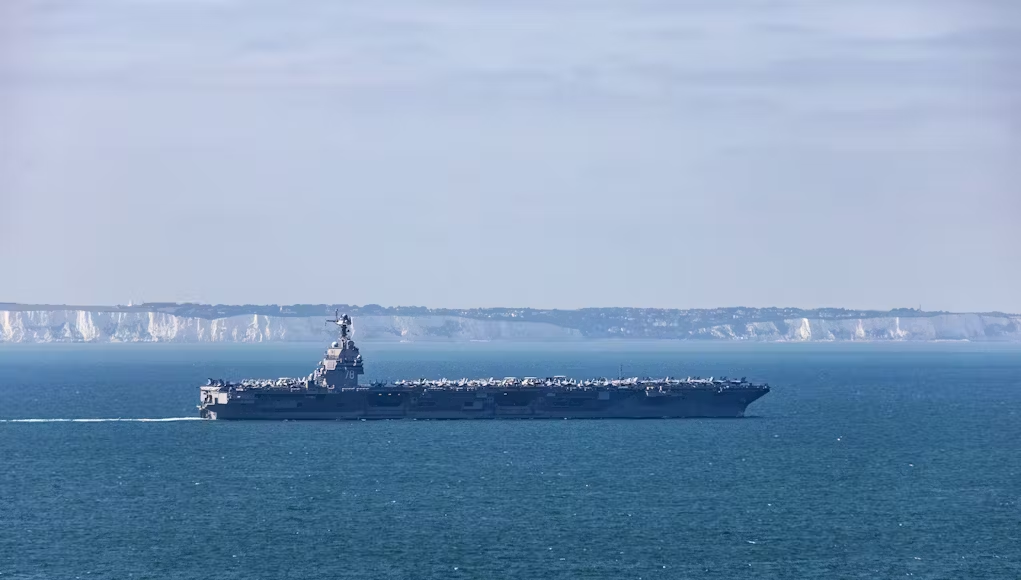London – The United States Navy’s USS Gerald R. Ford, the largest and most advanced aircraft carrier in the world, has entered the North Sea alongside its strike group, underscoring Washington’s commitment to NATO’s defense posture in Europe.
The Gerald R. Ford Carrier Strike Group (GRFCSG) made its passage through the Strait of Dover on 17 August, marking the first such U.S. carrier transit through the Channel since the Harry S. Truman strike group nearly a year earlier. The move comes at a time of heightened tensions across the Euro-Atlantic region, where alliance deterrence and maritime freedom are increasingly contested.
Sailing alongside the Ford are three Arleigh Burke-class guided-missile destroyers: USS Mahan (DDG 72), USS Winston S. Churchill (DDG 81), and USS Bainbridge (DDG 96). Together, they represent a formidable show of naval force, designed to project power, ensure freedom of navigation, and assure NATO allies.
Captain Dave Skarosi, commanding officer of the Gerald R. Ford, described the transit as more than a routine maneuver. “Our agile movement through one of the world’s most strategic maritime chokepoints is proof of America’s forward-deployed capability to deter aggression and preserve peace. The Gerald R. Ford brings unmatched strength to defend the Euro-Atlantic region against hostile action,” he stated.
The U.S. Navy emphasized the broader alliance message in its official release, pointing to the strike group’s role in reinforcing NATO’s deterrence. “The flexibility and scale of GRFCSG’s operations are unrivaled. Their continued presence in the European theater reaffirms the United States’ ironclad commitment to security and stability across the continent,” the statement noted.
Captain Mark Lawrence, commodore of Destroyer Squadron Two, echoed this message of collective strength. “A free and open maritime domain benefits all nations. Our coordinated surface force transit into the North Sea demonstrates unity, resolve, and a shared vision of stability across Europe,” he remarked.
The Strait of Dover, the narrowest section of the English Channel, serves as a critical maritime corridor connecting the Atlantic to the North Sea. For NATO, the Gerald R. Ford’s entry is both symbolic and strategic—an unmistakable signal to adversaries and reassurance to allies.
Currently deployed in the U.S. 6th Fleet’s area of operations, which spans Europe and Africa, the carrier strike group’s mission is to bolster readiness, strengthen interoperability with partners, and defend allied interests at sea. Its presence highlights the enduring role of U.S. naval power in maintaining the balance of security in Europe’s increasingly contested waters.






